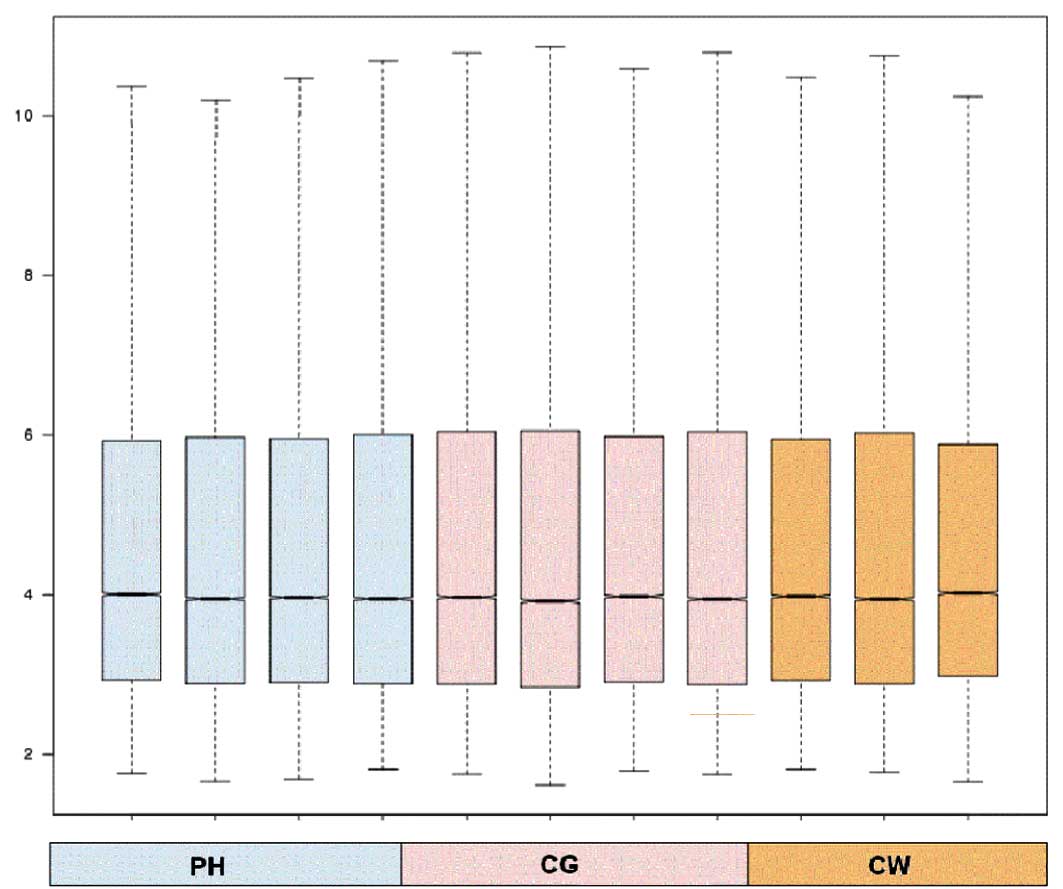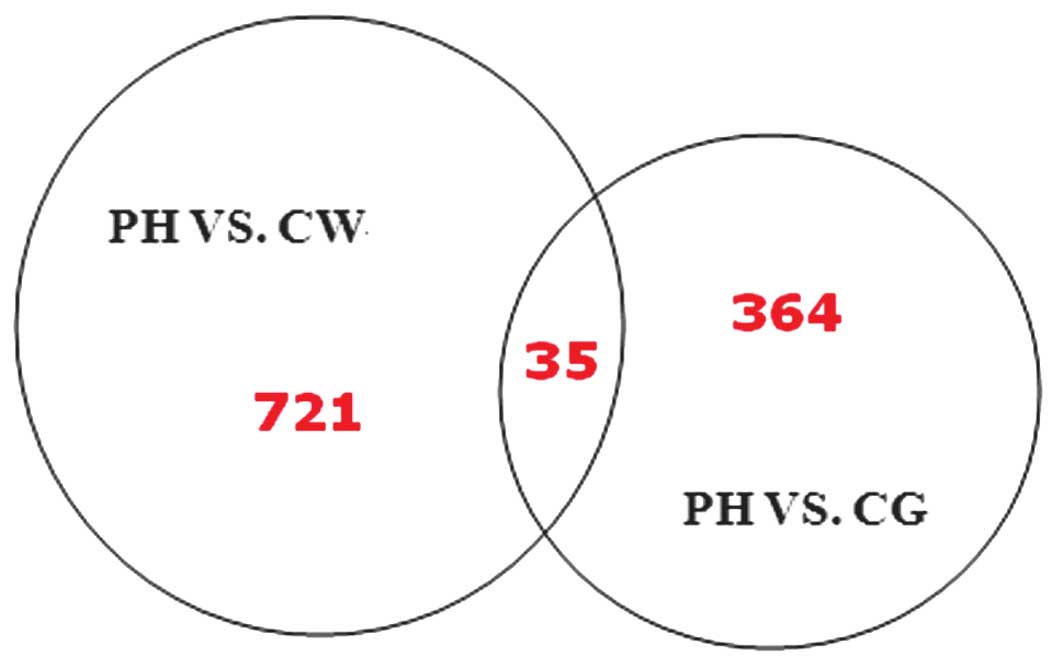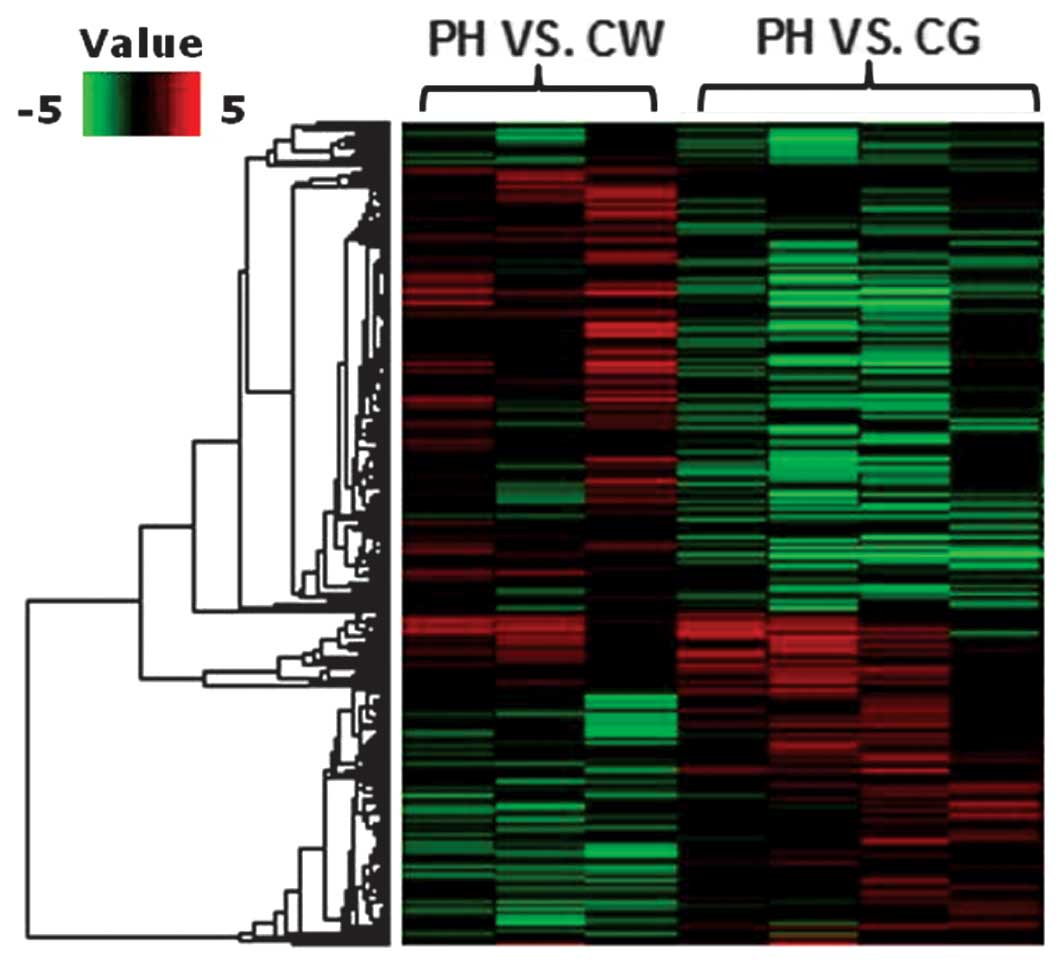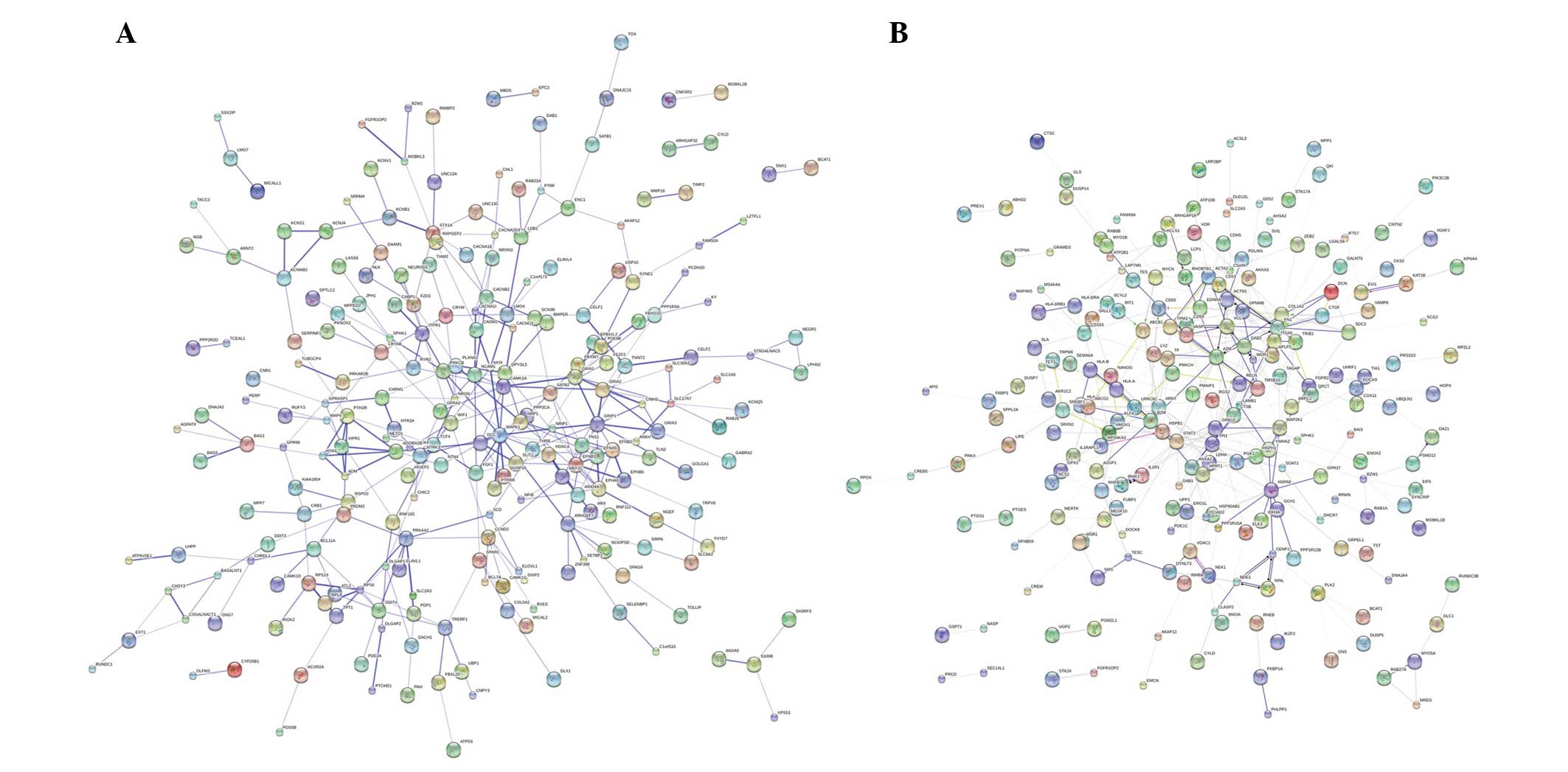|
1
|
Aguilar MI and Freeman WD: Spontaneous
intracerebral hemorrhage. Semin Neurol. 30:555–564. 2010.
View Article : Google Scholar
|
|
2
|
Thiex R and Tsirka SE: Brain edema after
intracerebral hemorrhage: mechanisms, treatment options, management
strategies, and operative indications. Neurosurg Focus. 22:E62007.
View Article : Google Scholar
|
|
3
|
Wang J and Doré S: Inflammation after
intracerebral hemorrhage. J Cereb Blood Flow Metab. 27:894–908.
2006.
|
|
4
|
Hua Y, Keep RF, Hoff JT and Xi G: Brain
injury after intracerebral hemorrhage: the role of thrombin and
iron. Stroke. 38(Suppl): 759–762. 2007. View Article : Google Scholar : PubMed/NCBI
|
|
5
|
Xi G, Keep RF and Hoff JT: Mechanisms of
brain injury after intracerebral haemorrhage. Lancet Neurol.
5:53–63. 2006. View Article : Google Scholar : PubMed/NCBI
|
|
6
|
Aronowski J and Zhao X: Molecular
pathophysiology of cerebral hemorrhage: secondary brain injury.
Stroke. 42:1781–1786. 2011. View Article : Google Scholar : PubMed/NCBI
|
|
7
|
Tuhrim S, Horowitz DR, Sacher M and
Godbold JH: Validation and comparison of models predicting survival
following intracerebral hemorrhage. Crit Care Med. 23:950–954.
1995. View Article : Google Scholar : PubMed/NCBI
|
|
8
|
Xi G and Hoff J: The pathophysiology of
hemorrhagic lesions. Imaging of the Nervous System: Diagnosis and
Therapeutic Applications. Latchaw R, Kucharczyk J and Moseley ME: 1
and 2. Elsevier Mosby; Philadelphia: pp. 519–534. 2005
|
|
9
|
Brown DL and Morgenstern LB: Stopping the
bleeding in intracerebral hemorrhage. N Engl J Med. 352:828–830.
2005. View Article : Google Scholar : PubMed/NCBI
|
|
10
|
Ohnishi M, Monda A, Takemoto R, et al:
Sesamin suppresses activation of microglia and p44/42 MAPK pathway,
which confers neuroprotection in rat intracerebral hemorrhage.
Neuroscience. 232C:45–52. 2012.
|
|
11
|
Hu YY, Huang M, Dong XQ, Xu QP, Yu WH and
Zhang ZY: Ginkgolide B reduces neuronal cell apoptosis in the
hemorrhagic rat brain: Possible involvement of Toll-like receptor
4/nuclear factor-kappa B pathway. J Ethnopharmacol. 137:1462–1468.
2011. View Article : Google Scholar : PubMed/NCBI
|
|
12
|
Carmichael ST, Vespa PM, Saver JL, et al:
Genomic profiles of damage and protection in human intracerebral
hemorrhage. J Cereb Blood Flow Metab. 28:1860–1875. 2008.
View Article : Google Scholar : PubMed/NCBI
|
|
13
|
Rosell A, Vilalta A, García-Berrocoso T,
et al: Brain perihematoma genomic profile following spontaneous
human intracerebral hemorrhage. PLoS One. 6:e167502011. View Article : Google Scholar
|
|
14
|
Troyanskaya O, Cantor M, Sherlock G, et
al: Missing value estimation methods for DNA microarrays.
Bioinformatics. 17:520–525. 2001. View Article : Google Scholar : PubMed/NCBI
|
|
15
|
Fujita A, Sato JR, de Rodrigues LO,
Ferreira CE and Sogayar MC: Evaluating different methods of
microarray data normalization. BMC Bioinformatics. 7:4692006.
View Article : Google Scholar : PubMed/NCBI
|
|
16
|
Wettenhall JM and Smyth GK: limmaGUI: a
graphical user interface for linear modeling of microarray data.
Bioinformatics. 20:3705–3706. 2004. View Article : Google Scholar : PubMed/NCBI
|
|
17
|
Benjamini Y and Hochberg Y: Controlling
the false discovery rate: a practical and powerful approach to
multiple testing. J R Stat Soc. 57:289–300. 1995.
|
|
18
|
Liu CL, Prapong W, Natkunam Y, et al:
Software tools for high-throughput analysis and archiving of
immunohistochemistry staining data obtained with tissue
microarrays. Am J Pathol. 161:1557–1565. 2002. View Article : Google Scholar
|
|
19
|
Giot L, Bader JS, Brouwer C, et al: A
protein interaction map of Drosophila melanogaster. Science.
302:1727–1736. 2003. View Article : Google Scholar : PubMed/NCBI
|
|
20
|
Li S, Armstrong CM, Bertin N, et al: A map
of the interactome network of the metazoan C. elegans.
Science. 303:540–543. 2004. View Article : Google Scholar : PubMed/NCBI
|
|
21
|
Szklarczyk D, Franceschini A, Kuhn M, et
al: The STRING database in 2011: functional interaction networks of
proteins, globally integrated and scored. Nucleic Acids Res.
39:D561–D568. 2011. View Article : Google Scholar : PubMed/NCBI
|
|
22
|
Berriz GF, Beaver JE, Cenik C, Tasan M and
Roth FP: Next generation software for functional trend analysis.
Bioinformatics. 25:3043–3044. 2009. View Article : Google Scholar : PubMed/NCBI
|
|
23
|
Hosack DA, Dennis G Jr, Sherman BT, Lane
HC and Lempicki RA: Identifying biological themes within lists of
genes with EASE. Genome Biol. 4:R702003. View Article : Google Scholar : PubMed/NCBI
|
|
24
|
Kahle KT, Simard JM, Staley KJ, Nahed BV,
Jones PS and Sun D: Molecular mechanisms of ischemic cerebral
edema: role of electroneutral ion transport. Physiology (Bethesda).
24:257–265. 2009. View Article : Google Scholar : PubMed/NCBI
|
|
25
|
Bodalia A, Li H and Jackson MF: Loss of
endoplasmic reticulum Ca2+homeostasis: contribution to
neuronal cell death during cerebral ischemia. Acta Pharmacol Sin.
34:49–59. 2013.
|
|
26
|
Kakizawa S, Yamazawa T, Chen Y, et al:
Nitric oxide-induced calcium release via ryanodine receptors
regulates neuronal function. EMBO J. 31:417–428. 2012. View Article : Google Scholar : PubMed/NCBI
|
|
27
|
Liao Y, Kristiansen A-M, Oksvold CP, et
al: Neuronal Ca2+-activated K+ channels limit
brain infarction and promote survival. PLoS One.
5:e156012010.PubMed/NCBI
|
|
28
|
McGeown JG: Interactions between inositol
1, 4, 5-trisphosphate receptors and ryanodine receptors in smooth
muscle: one store or two? Cell Calcium. 35:613–619. 2004.
View Article : Google Scholar : PubMed/NCBI
|
|
29
|
Maxwell JT, Natesan S and Mignery GA:
Modulation of inositol 1, 4, 5-trisphosphate receptor type-2
channel activity by Ca2+/calmodulin-dependent protein
kinase II (CaMKII)-mediated phosphorylation. J Biol Chem.
287:39419–39428. 2012. View Article : Google Scholar : PubMed/NCBI
|
|
30
|
Dev KK, Mullershausen F, Mattes H, et al:
Brain sphingosine-1-phosphate receptors: implication for FTY720 in
the treatment of multiple sclerosis. Pharmacol Ther. 117:77–93.
2008. View Article : Google Scholar : PubMed/NCBI
|
|
31
|
Pébay A, Toutant M, Prémont J, et al:
Sphingosine-1-phosphate induces proliferation of astrocytes:
regulation by intracellular signalling cascades. Eur J Neurosci.
13:2067–2076. 2001.PubMed/NCBI
|
|
32
|
McVerry BJ and Garcia JG: In vitro and in
vivo modulation of vascular barrier integrity by sphingosine
1-phosphate: mechanistic insights. Cell Signal. 17:131–139. 2005.
View Article : Google Scholar : PubMed/NCBI
|
|
33
|
Altay O, Hasegawa Y, Sherchan P, et al:
Isoflurane delays the development of early brain injury after
subarachnoid hemorrhage through sphingosine-related pathway
activation in mice. Crit Care Med. 40:1908–1913. 2012. View Article : Google Scholar
|
|
34
|
Overman JJ, Clarkson AN, Wanner IB, et al:
A role for ephrin-A5 in axonal sprouting, recovery, and
activity-dependent plasticity after stroke. Proc Natl Acad Sci USA.
109:E2230–E2239. 2012. View Article : Google Scholar : PubMed/NCBI
|
|
35
|
Sobel RA: Ephrin A receptors and ligands
in lesions and normal-appearing white matter in multiple sclerosis.
Brain Pathol. 15:35–45. 2005. View Article : Google Scholar : PubMed/NCBI
|
|
36
|
Bodmer D, Vaughan KA, Zacharia BE, Hickman
ZL and Connolly ES: The molecular mechanisms that promote edema
after intracerebral hemorrhage. Transl Stroke Res. 3(Suppl 1):
52–61. 2012. View Article : Google Scholar : PubMed/NCBI
|
|
37
|
Baeten KM and Akassoglou K: Extracellular
matrix and matrix receptors in blood-brain barrier formation and
stroke. Dev Neurobiol. 71:1018–1039. 2011. View Article : Google Scholar : PubMed/NCBI
|
|
38
|
Abbott NJ, Patabendige AA, Dolman DE,
Yusof SR and Begley DJ: Structure and function of the blood-brain
barrier. Neurobiol Dis. 37:13–25. 2010. View Article : Google Scholar
|


















